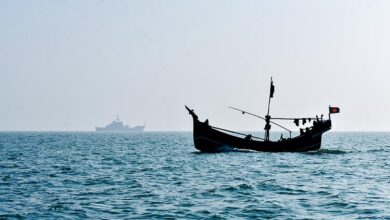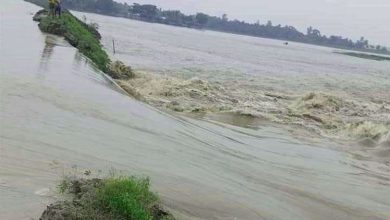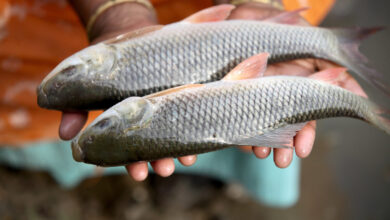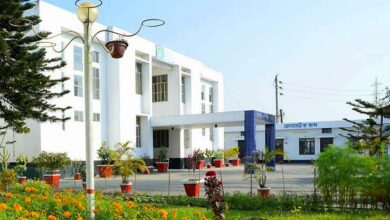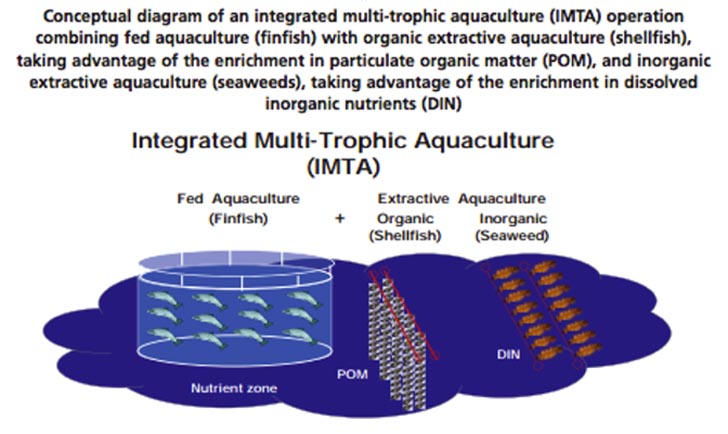
IMTA:
Integrated Multi-Trophic Aquaculture (IMTA) is a system that feeds species with organisms that extract organic materials and extractive inorganic species that grow on aquaculture wastes. Because it can incorporate multiple species, IMTA is thought to be more sustainable than traditional monoculture systems. Polyculture, or the farming of two or more species together, is comparable to integrated multi-trophic aquaculture, or IMTA. IMTA entails the selection, arrangement, and dispersal of different species and/or components within the system in order to facilitate the absorption and utilization of both particulate and dissolved waste products produced by fish farms.
Principle of IMTA:
“Extraction and conversion through diversification is the solution to nitrification, not dilution,” is the foundational idea of the IMTA. By converting leftovers and uneaten feed from fed organisms into harvestable crops, IMTA reduces eutrophication, increases economic diversity, and enhances environmental and economic sustainability. IMTA entails the selection, arrangement, and dispersal of different species and/or components within the system in order to facilitate the absorption and utilization of both particulate and dissolved waste products produced by fish farms.
Benefits of IMTA:
IMTA is a technique that combines the evolution of inorganic extractive species with feeding aquaculture species to produce a balanced system that is socially, economically, and environmentally flexible. Better management practices may be beneficial. The amount of waste products in the environment decreased as a result of the “recycling” of aquaculture nutrients. Intense land-based tank culture is susceptible to IMTA.
Several aquatic species from various trophic levels are raised in integrated farming systems (IMTAs) to increase productivity, cut waste, and supply ecosystem services like bioremediation. Lower trophic level species, which are typically plants or invertebrates, obtain their nutrients from waste materials like excrement and leftover food from higher trophic level species, which are mainly finfish.
Byproducts from one aquatic species, including trash, is used as inputs (fertilizers, food) for another aquatic species through integrated multi-trophic aquaculture (IMTA). Farmers create balanced systems for environmental remediation (biomitigation), economic stability (better output, lower cost, product diversification and risk reduction), and social acceptability (better management practices) by combining fed aquaculture (fish, shrimp) with inorganic extractive (seaweed) and organic extractive (shellfish).
There are a number of benefits to the IMTA system. The benefits of IMTA include:
- Reducing wastewater by the use of biofilters (bio-mitigation).
- A general increase in economic output through the use of species’ capacities for extraction at different trophic levels leading to increased profitability.
- Bio-filter culture uses waste from integrated multi-trophic aquaculture systems as a resource.
- An increase in local employment and stimulating the local economy.
- Moreover, IMTA makes it possible to maximize the available area. It makes it possible to create multiple goods in the same area, making better and more efficient use of the resource.
- Some extractive species, like seaweed, have the ability to prevent or reduce disease because of their antibacterial properties against microorganisms that cause illness in fish.
- Obtaining organic certification and eco-labeling schemes increases profit.
- Diversity increases the business’s resilience by supplying different sources of revenue and cash flows. By filling a new market niche, IMTA products offer more environmentally friendly and circular items that may fetch a higher price.
- IMTA boosts farm absorption capacity while dramatically lowering aquaculture’s environmental cost.
Challenges of IMTA:
However, this system’s drawbacks include:
- IMTA provide a lower yield than monocultures
- Farmers have worries about food safety due to parasites
- It has problems with public perception and species restriction
- IMTA needs effective management in order to balance inputs and nutrient fluxes.
- As people become familiar with the new procedures and technologies, the transition to IMTA will take time.
Farhana Islam
Agriculturist, Researcher
Fisheries Resource Management, CVASU

